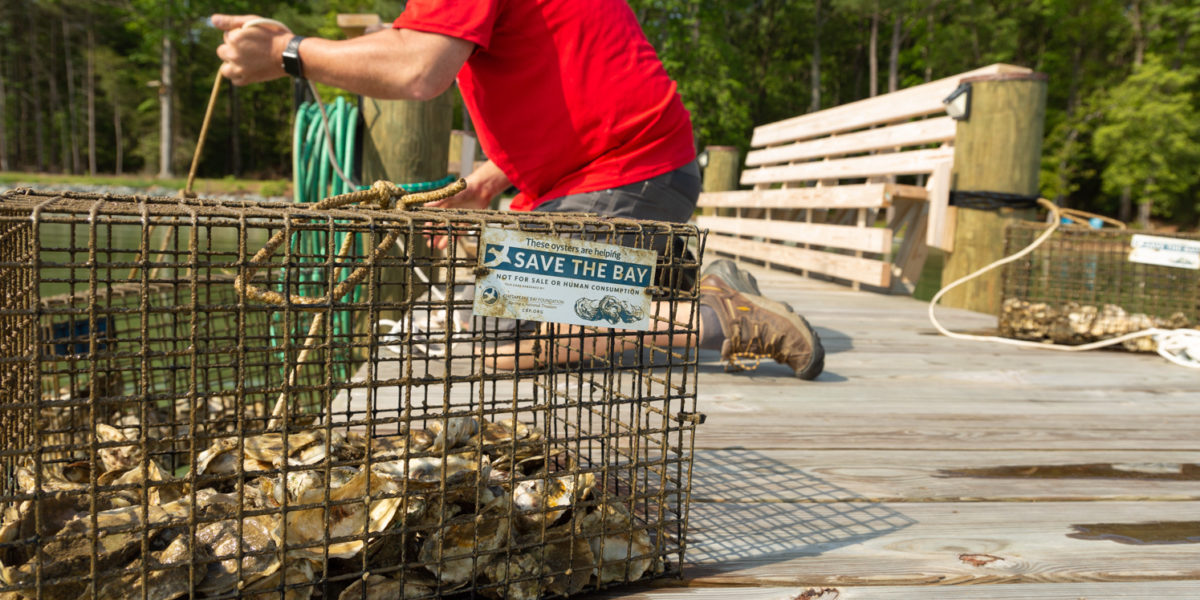There are few things more iconic to the Chesapeake Bay than the eastern oyster. As filter feeders, they clean our waters. As an important part of the food chain, they serve as tasty treats. But like so many of our natural resources, oysters have become victims to over-harvesting, disease, pollution, and habitat loss. Today, oyster populations in the Chesapeake Bay have declined to only about 2% of their original levels.
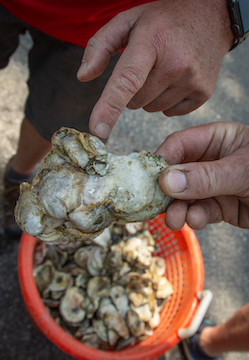
While this may be alarming to Marylanders who love a good oyster on the half shell, this decline is even more devastating to the environment. As filter feeders, oysters pull water into their shells and filter the water as it passes over their gills. Everything that they don’t want to eat, they package into mucus packs called “pseudo feces” that settle to the bottom.
“It sounds gross, but this process is critical to maintaining water quality,” notes Kristen Lycett, executive director of the Phillips Wharf Environmental Center, a nonprofit in Easton, MD. “It’s an important way that particulates are filtered out.”
Oysters’ effectiveness in filtering the water is astonishing. Combined with the impact of other filter feeders such as barnacles and tunicates, these small creatures can filter the entire volume of Harris Creek (a tidal creek on the Eastern Shore of Maryland) in about 10 days. They can filter the water in the entire Chesapeake Bay in a year.
Growing Oysters from Home
But these water cleaners are growing scarce, which is why organizations like Oysters for the Bay, Phillips Wharf and the Chesapeake Bay Foundation are working with Marylanders Grow Oysters to engage with local volunteers to help regrow oyster populations. How can local communities help? By growing oysters at home.
The program works like this:
- Volunteers are provided with thousands of “seed” oysters.
- Volunteers hang the cages off their docks for nine to 12 months until the oysters are 1-2 inches long.
- Participants return the oysters to the program to be planted in sanctuary (non-harvesting) reefs.
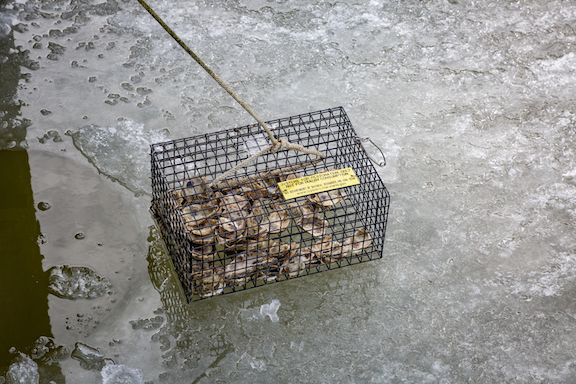
“Basically, we hand off giant bags of baby oysters (called spat on shell), and volunteers put them in oyster cages and hang them off their docks,” notes Lycett. “We just ask that they give them a shake every two weeks or so to prevent the baby oysters from growing onto the cage as they get large.”
At Phillips Wharf, they have planted anywhere from 15,000 to 200,000 oysters per year, depending on volunteer and staff availability. After having to scale back during the height of the COVID-19 pandemic, Phillips Wharf is now rebuilding its program and is set to more than double the number of volunteers and oyster cages going out this fall.
Giving Oysters a Head Start
These efforts are working. Thanks to its many volunteers, Phillips Wharf has been able to plant nearly 212,000 oysters in 2022 alone. Since the program’s inception, it has planted 780,000 oysters.
Lycett explains that while this might seem small compared to the millions that get planted by the state for large-scale restoration programs, the oysters being planted as part of these volunteer oyster gardening programs have a higher survival rate since they are more mature when they are placed in the sanctuary reefs.
“At the end of the growing season, our oysters are typically around an inch or more,” she explains. “When large-scale restoration programs plant millions of brand-new oyster spat (only a couple of millimeters in size), the mortality rate for those oysters is very high. After we plant them, they are already well on their way to becoming adults and should experience minimal mortality.”
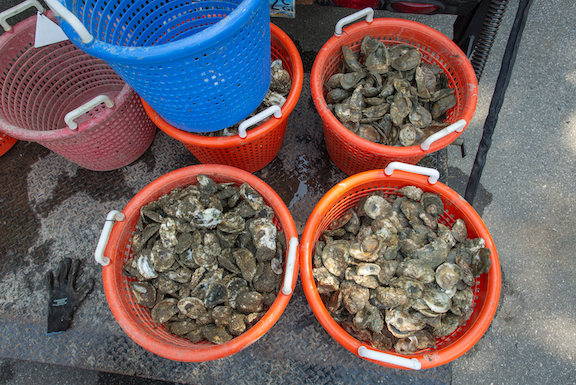
Chesapeake Bay Foundation runs a similar oyster gardening program. It currently has over 400 participating watershed residents and is looking to expand its program by adding 100 new gardeners this year. Kellie Fiala, CBF’s Maryland oyster restoration coordinator, says, “Thanks to the time and dedication of our oyster gardeners and volunteers, we planted 218,055 oysters into the Chesapeake Bay and its tributaries last year alone.”
CBF’s oyster gardening program started in 1998. To date, it has planted a whopping 12,522,190 oysters.
We Grow Oysters, Too!
Here at Ecoprint, we participate in the Oysters for the Bay, Phillips Wharf and Chesapeake Bay Foundation oyster gardening programs. In 2022, we were responsible for four oyster cages in each program.
In fact, that’s me in the picture below. One of the reasons we purchased a place on the Eastern Shore was to become more involved with the community and the area surrounding the Chesapeake Bay. I was aware of the oyster harvesting programs, and once our pier was completed, we started placing cages throughout the harvesting season.
Over the last year, we have gone from four cages to eight (delivering two bushels of oysters) and will drop 12 cages this fall. It’s a great feeling helping and doing our part.
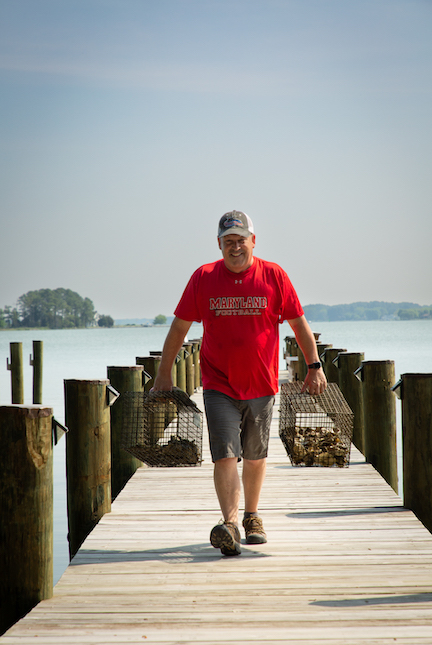
Notes Fiala, “We are so grateful to our oyster gardeners not only for the time they dedicate during the raising of their oysters but for their work as advocates for the Bay, which is a true national treasure.”
Lycett agrees. “Programs like these allow regular folks to get involved with restoration work. You don’t need a degree or specialized experience to grow oysters with us. You have the opportunity to assist with data collection, pull up your cages and see what other organisms are living in there with your oysters, and see how the oysters grow and develop over time. This type of hands-on restoration work really connects people to the Chesapeake Bay, and that is one of the major tenets of our work.”
Want to Get Involved?
New oyster gardening programs are set to begin this fall, and it’s easy to get involved. Sign up for one of the new oyster gardening workshops, pick up oyster cages, and prepare for the upcoming growing season.
To learn more about the oyster gardening program run by the Chesapeake Bay Foundation, click here.
To learn more about the oyster gardening program run by Phillips Wharf, click here.
To learn more about oyster restoration by Oysters for the Bay, click here.
Sustainably,
Bobby Firestein

